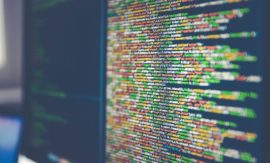Intended learning outcomes: Explain possibilities and limitations of the IT support of planning & control. Disclose factors that influence individual acceptance and the range of implementation of ERP software.
For many years, contradictory opinions have been expressed about the effectiveness and the efficiency of ERP or SCM software. This contradiction can be illustrated by two extreme and opposite views:
- “There is no satisfactory ERP or SCM software package.”
- “Every ERP or SCM software package is good.”
If we examine these two statements in greater detail, we discover some interesting and somewhat surprising results that show that the contradictory views are due to different starting positions. The first statement concerns the limitations of any ERP or SCM software package, whereas the second relates to the essential success factors.
The following illustrations relate to both company-specific and standard software, although some of the comments concerning the choice of logistics package will of course apply only to the standard software.
Course section 9.3: Subsections and their intended learning outcomes

9.3 Factors for Successful Implementation of ERP Software and SCM Software
Intended learning outcomes: Explain possibilities and limitations of the IT support of planning & control. Disclose factors that influence individual acceptance and the range of implementation of ERP software.

9.3.1 Limitations of the IT Support of Planning & Control
Intended learning outcomes: Explain the influence of ERP or SCM software on the extent to which corporate objectives are fulfilled.

9.3.1b Possibilities of the IT Support of Planning & Control
Intended learning outcomes: Disclose why objectives aimed at improving the company’s performance can only partly be affected by the ERP or SCM software. Identify situations where ERP or SCM software can be used to good effect.

9.3.2 Factors That Influence Individual Acceptance of Implementation of ERP Software
Intended learning outcomes: Describe factors that influence individual acceptance of ERP software.

9.3.2b Factors That Influence the Range of Implementation of ERP Software
Intended learning outcomes: Disclose factors that influence the range of implementation of ERP software. Differentiate between important factors and less important factors.
Course 9: Sections and their intended learning outcomes

Course 9 – ERP Software and SCM Software
Intended learning outcomes: Describe software used for logistics purposes. Explain contents of logistics software packages. Disclose factors for successful implementation of logistics software.

9.1 Software in the Area of ERP and SCM: An Introduction
Intended learning outcomes: Produce an overview on history and origin of ERP software. Disclose scope and range of ERP and SCM software.

9.2 Contents of ERP Software and SCM Software
Intended learning outcomes: Describe classical MRP II / ERP software. Present software for customer order production, for the process industry, for transcorporate planning & control in a supply chain, and for Customer Relationship Management (CRM). Differentiate between standard and company-specific software.

9.3 Factors for Successful Implementation of ERP Software and SCM Software
Intended learning outcomes: Explain possibilities and limitations of the IT support of planning & control. Disclose factors that influence individual acceptance and the range of implementation of ERP software.

9.4 Summary
.

9.5 Keywords
.

9.6 Scenarios and Exercises
Intended learning outcomes: Review factors that influence people’s acceptance of ERP software. Differentiate between standard and company-specific software. Describe basic issues of software for transcorporate planning & control.

9.7 References
.
